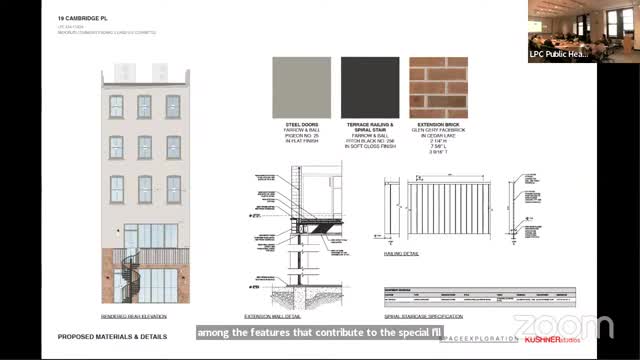Historic Brooklyn Townhouse Gains Rooftop Addition Approval
November 19, 2024 | Land Preservation Commission, New York City Board & Committees, New York City, New York County, New York
This article was created by AI summarizing key points discussed. AI makes mistakes, so for full details and context, please refer to the video of the full meeting. Please report any errors so we can fix them. Report an error »

In a recent meeting, the Landmarks Preservation Commission (LPC) approved two significant applications concerning historic properties in Brooklyn. The first application involved a proposed rear yard addition to a residential building, which was deemed compatible with the architectural character of the Clinton Hill Historic District. The commission unanimously agreed that the addition would not damage any significant architectural features and would not be visible from public thoroughfares. The addition will feature brick cladding and a modern metal and glass window assembly, aligning with the residential scale of the neighborhood.
The second application, presented by David Barr of Opera Studio, sought approval for a rooftop addition and a rear balcony at 153 State Street, a townhouse built in 1857 located in the Brooklyn Heights Historic District. The proposal included a rooftop bulkhead for access to an occupied terrace and a modest two-foot balcony on the second floor. The commission noted that the design minimizes visibility from the street and is consistent with other structures in the area that feature similar rooftop additions.
Public testimony supported the application, with the Brooklyn Heights Association advocating for the approval while suggesting that future applicants provide more comprehensive block plans. The commission acknowledged the importance of maintaining the historic character of the district while accommodating modern needs. Ultimately, both applications received unanimous support from the commissioners, reflecting a commitment to preserving the architectural integrity of Brooklyn's historic neighborhoods while allowing for thoughtful development.
The second application, presented by David Barr of Opera Studio, sought approval for a rooftop addition and a rear balcony at 153 State Street, a townhouse built in 1857 located in the Brooklyn Heights Historic District. The proposal included a rooftop bulkhead for access to an occupied terrace and a modest two-foot balcony on the second floor. The commission noted that the design minimizes visibility from the street and is consistent with other structures in the area that feature similar rooftop additions.
Public testimony supported the application, with the Brooklyn Heights Association advocating for the approval while suggesting that future applicants provide more comprehensive block plans. The commission acknowledged the importance of maintaining the historic character of the district while accommodating modern needs. Ultimately, both applications received unanimous support from the commissioners, reflecting a commitment to preserving the architectural integrity of Brooklyn's historic neighborhoods while allowing for thoughtful development.
View full meeting
This article is based on a recent meeting—watch the full video and explore the complete transcript for deeper insights into the discussion.
View full meeting
